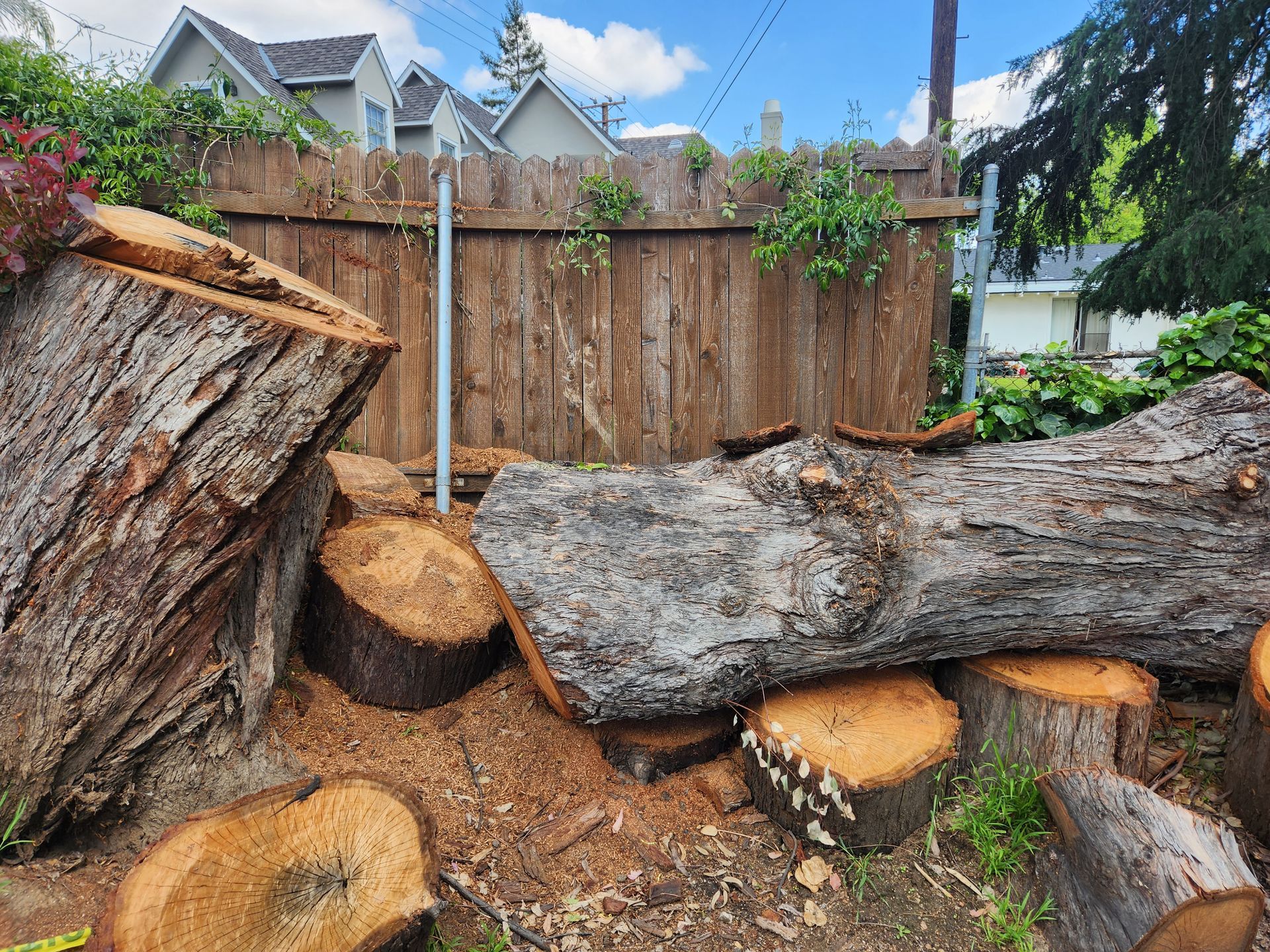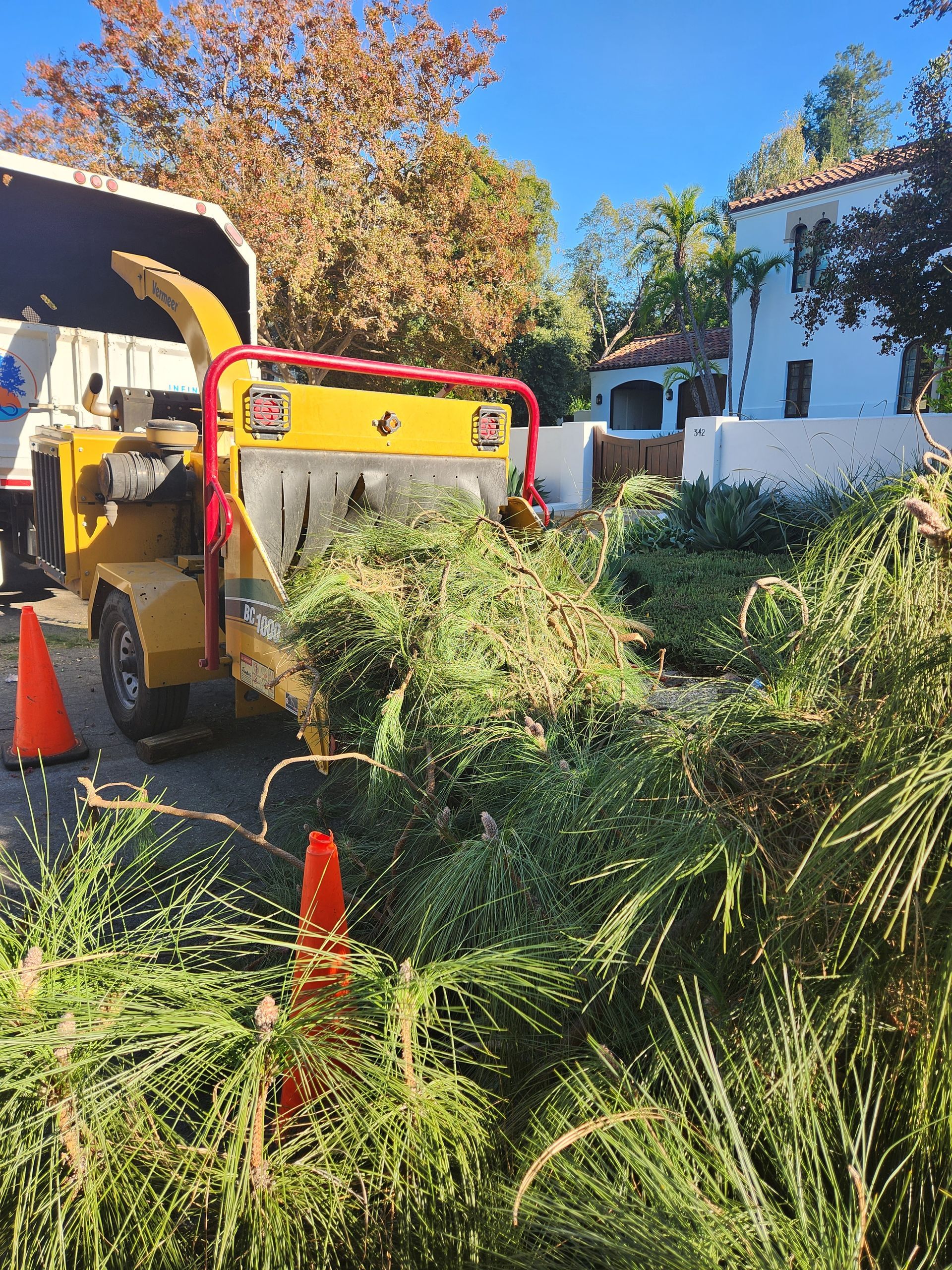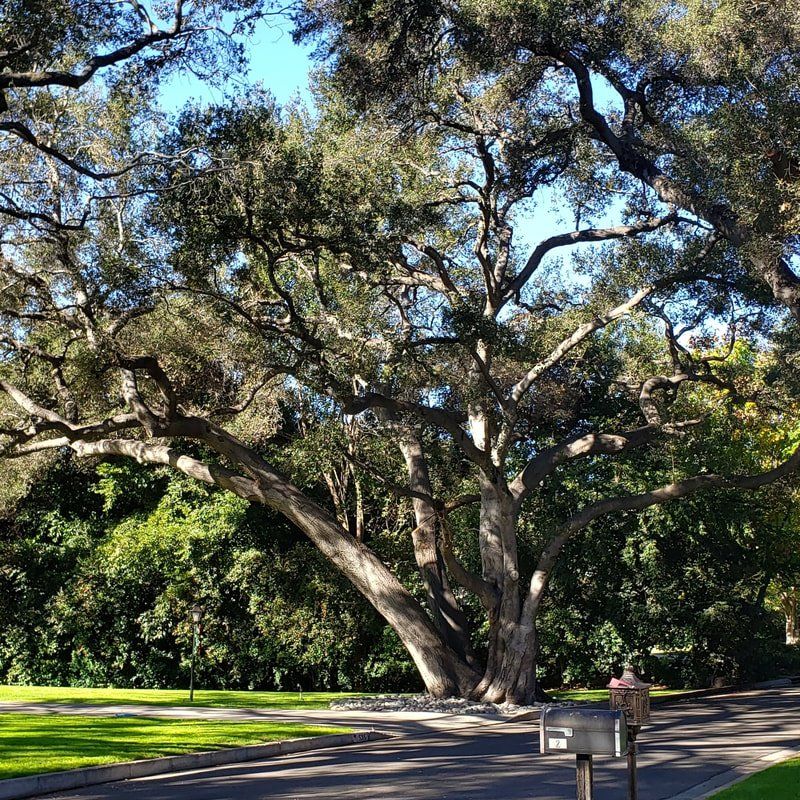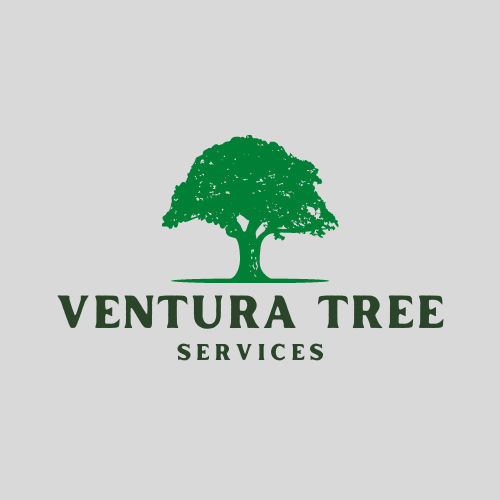Is It OK to Trim Trees in the Fall in Southern California?
Expert Insight and Best Practices
Tree trimming is a common practice among many homeowners looking to maintain the health and appearance of their landscapes. Here in Southern California, the timing of this task can significantly impact tree growth and overall health. Trimming trees in the fall is generally acceptable, but it's important to consider the specific species and local climate conditions.
Many trees in SoCal have different needs based on their life cycles. Some species may benefit from a fall trim, while others may be better off if pruned in spring or summer. Understanding the unique characteristics of your trees can guide you in making the best decision.
Here we present the ideal practices for tree trimming in our region, including tips on timing, techniques, and what to avoid. Knowing when to trim can lead to healthier trees and a more vibrant yard throughout the seasons.
Tree Trimming Basics in Southern California
Tree trimming is an essential aspect of landscape maintenance in Southern California. Proper trimming promotes healthy growth and improves the tree's overall appearance.
Best Times for Trimming:
- Late Winter to Early Spring: Ideal for most species, as trees are dormant.
- Fall: Effective for specific tree types that thrive with post-growing season cuts.
Considerations for Trimming:
- Tree Species: Different species have unique growth patterns and peaks for trimming.
- Weather Conditions: Avoid trimming during extreme heat or high winds.
Tools Needed:
- Hand Pruners: For small branches and delicate work.
- Loppers: Ideal for thicker branches.
- Saws: Necessary for larger limbs.
Pruning Techniques:
- Thinning Cuts: Remove selected branches to improve light and air circulation.
- Reduction Cuts: Shorten a branch to a lateral one for better shape.
Local Regulations:
Check with local regulations or homeowners’ associations before trimming. Certain areas may have restrictions, especially for protected species. Adopting appropriate techniques and timing ensures trees remain healthy and visually appealing in the unique climate of Southern California. Regular maintenance can also prevent issues like disease or structural damage.
Best Practices for Tree Trimming
When trimming trees, timing is important. In Southern California, the best time is generally late winter to early spring, but fall trimming can be appropriate in certain scenarios.
Tools Needed:
- Pruning shears
- Loppers
- Chainsaw (for larger branches)
- Safety goggles and gloves
Techniques to Use:
- Clean Cuts: Use sharp tools to ensure clean cuts. This reduces the risk of damage.
- Cut at a 45-Degree Angle: This helps the tree heal faster and reduces water collection on the cut surface.
- Remove Dead or Diseased Branches: Focus on removing any branches that show signs of disease or decay. This prevents the spread to healthy areas.
Trimming Tips:
- Avoid Topping: Never cut the top of the tree indiscriminately. This can lead to weak regrowth.
- Limit Size: Only trim up to 25% of the tree's canopy in a single season. This minimizes shock.
- Evaluate Surroundings: Be aware of utility lines and nearby structures before trimming.
Post-Trimming Care:
- Clean Up: Collect and dispose of branches and leaves properly.
- Monitor Growth: Check the tree regularly for any signs of stress or disease after trimming.
Following these practices helps maintain the health and structure of trees while ensuring safety.
Understanding Fall Seasonal Tree Biology
In Southern California, fall marks a transition in tree biology. As days shorten and temperatures cool, trees prepare for winter dormancy.
Key biological changes include:
- Leaf Senescence: Trees begin to lose their leaves. This process helps conserve water and energy.
- Photosynthesis Decrease: The production of chlorophyll slows down, leading to the changing colors of leaves.
- Energy Storage: Trees store carbohydrates in their roots, crucial for survival during dormancy.
During this season, trees are more susceptible to stress. Pruning at this time can impact their health if not done properly.
Considerations for trimming:
- Timing: Late fall is often preferred, allowing for a balance between necessary pruning and seasonal stress.
- Health Risks: Pruning can expose trees to diseases or pests if not timed right.
- Tree Type: Deciduous and evergreen trees have different responses to fall trimming.
Understanding these factors is essential for effective tree care. It helps to support their health before the winter months. Proper timing and technique in trimming are crucial for longevity and vigor.
Reasons for Trimming Trees in the Fall
Trimming trees in the fall can be beneficial for various reasons.
1. Disease Prevention -- Removing dead or diseased branches reduces the risk of fungal infections. Fall is a good time to inspect trees for issues.
2. Sufficient Time for Healing -- Trimming in fall allows trees to heal before winter. This can lead to stronger growth in the spring.
3. Improved Air Circulation -- Thinning out crowded branches enhances airflow. Better circulation can help maintain tree health.
4. Enhanced Aesthetics -- A well-trimmed tree can enhance the appearance of your landscape. This is especially true before winter dormancy.
5. Safety Concerns -- Removing branches that are prone to breakage improves safety. This is particularly important in areas with high winds or heavy rain.
6. Pest Control -- Trimming can reduce habitats for certain pests. This may help minimize infestations in the following seasons.
7. Structural Integrity -- Caring for a tree's structure in the fall allows for strong growth in the future. Proper trimming can help develop a solid framework.
Choose the right time and method based on the tree species. Consulting with an arborist can provide additional insights.
Challenges of Fall Tree Trimming
Trimming trees in the fall presents several challenges specific to Southern California's climate and tree species.
Decreased Growth Activity -- As temperatures drop, many trees enter dormancy. This slows their growth, making recovery from trimming less efficient. Trimming at this time may lead to issues with healing.
Weather Considerations -- Fall can bring unpredictable weather patterns, including wind and rain. These conditions can stress trees that are already pruning-prone, increasing susceptibility to damage and disease.
Timing and Technique -- Finding the right time to trim is crucial. Improper timing can expose trees to harsh conditions before they can recover. Specific techniques should be employed to minimize harm.
Pest and Disease Risks -- In fall, pests and diseases become more prevalent. Open cuts from trimming can attract insects or pathogens. This increases the risk of infestations and diseases that could affect tree health.
Regulatory Compliance -- Some areas have regulations regarding tree trimming, especially for protected species. Understanding local laws is essential to avoid fines or legal issues.
Tree owners must weigh these challenges against the benefits of trimming in fall. Careful planning and execution are necessary for successful tree maintenance.
Selecting Trees for Fall Trimming
When considering fall trimming for trees in Southern California, it’s essential to choose the right species. Some trees respond better to pruning during this season, promoting healthy growth.
Ideal Trees for Fall Trimming:
- Deciduous Trees: Trees like oak, maple, and sycamore benefit from fall trimming. Pruning during dormancy reduces stress and encourages vigorous spring growth.
- Fruit Trees: Apple and pear trees can also be pruned in the fall. This timing can help with shaping and disease management.
- Certain Ornamental Trees: Trees such as crepe myrtle are suitable for fall trimming as they prepare for the winter months ahead.
Trees to Avoid in Fall Trimming:
- Evergreens: Trees like pine and fir should generally not be pruned in the fall. This can expose them to cold damage.
- Flowering Trees: Trees that bloom in spring, such as cherry and magnolia, should be pruned after flowering to maintain budding.
Tips for Successful Trimming:
- Inspect trees for dead or diseased branches requiring immediate attention.
- Use sharp, clean tools to make precise cuts.
- Avoid over-pruning; maintain a healthy canopy.
Selecting the appropriate trees and timing for fall trimming can enhance tree health and promote robust growth for the following year.
The Impact of Climate on Trimming Decisions
Climate plays a crucial role in determining the appropriate time for tree trimming in Southern California. The region experiences a Mediterranean climate with distinct wet and dry seasons.
Temperature Considerations
- Mild Winters: Mild winter temperatures can allow for year-round trimming.
- Heat Stress: Trimming during extreme heat in the summer may stress trees, leading to potential damage.
Rainfall Patterns
- Post-Rain Trimming: It’s often beneficial to trim trees after the rainy season when trees are actively growing.
- Drought Concerns: During droughts, trees may be more susceptible to stress, making strategic trimming important.
Pest and Disease Management
- Lifecycle Awareness: Understanding pest lifecycles is essential. Many pests thrive in warm conditions, so timing can impact tree health.
- Fungal Growth: Wet conditions can promote fungal growth after trimming. Choosing the right season reduces this risk.
Local Variability
- Microclimates: Southern California has diverse microclimates.
- Specific Needs: Trimming should be tailored to local conditions and specific tree species for optimal health.
By considering these climate factors, tree trimming can enhance the longevity and vitality of trees in Southern California.
Professional Tree Care Versus DIY Trimming
When considering tree trimming, the choice between professional care and DIY depends on several factors.
Expertise: The professionals at Ventura Tree Services have training and experience. They understand tree biology and can identify the best techniques for trimming.
Safety: Tree trimming can be hazardous. Professionals use proper gear and tools, reducing the risk of injury. DIY trimming increases the chance of accidents, especially with large or unstable trees.
Equipment: Professionals come equipped with specialized tools. This can lead to cleaner cuts, reducing the risk of disease. Homeowners may lack access to such equipment.
Cost: DIY trimming may seem more economical. However, it can lead to costly mistakes if trees are damaged. Professionals provide a guarantee for their work, adding value to their service.
Time: Trimming trees can be time-consuming. Professionals can often complete the task quicker and more efficiently, allowing homeowners to focus on other responsibilities.
Health of the Tree: Incorrect trimming techniques can harm trees. Professionals follow best practices to promote healthy growth. DIY enthusiasts may unintentionally cause lasting damage.
In summary, while DIY trimming may appeal to some, it’s essential to weigh the benefits of professional services against the potential risks and downsides.
You might also like
Book a Service Today
We will get back to you as soon as possible
Please try again later
FREQUENTLY ASKED STUMP GRINDING QUESTIONS

WHAT IS A STUMP GRINDER?
Stump grinder machines are very powerful machines (tools) that look sort of like a small lawnmower combined with a circular saw Stump grinders are designed to be rolled up to the stump and then grind it into little saw dust like pieces.
HOW DOES THE STUMP GRINDER WORK?
A stump grinder chews away at the stump wood The stump grinding machine is used to chew away the portion of a tree that has been cut down. Stump grinders use a powerful, rotating blade that rips into the wooden stump as it turns. The teeth of the blade cut the stump wood into very small pieces. The operator will move the rotating blade back and forth over the entire stump as the blade’s action reduces the stump and roots to wood chips. The machine does take the stump down to well below ground level for a complete removal of the stump and the upper roots.
WHAT HAPPENS TO THE WOOD FROM THE TREE STUMP AFTER GRINDING?
Grinding a stump should result in lots of wood chips and saw dust. The grinding produces a lot of these, but they can be used as mulch in your yard or disposed of in your green waste bin. Since you will also have a hole where you’ve just ground out all the stump and root volume, the wood chips can be used to fill the hole and left to decay. With or without his fill you can use soil to fill the hole so that it’s even with the surrounding ground.
ARE STUMP GRINDERS THE SAME AS STUMP REMOVERS?
Stump grinders and stump removers are different things. A stump remover is auger-like and bores down into the stump from above, removing all trunk wood and anchoring roots.
CAN I RENT A STUMP GRINDER AND DO IT MYSELF?
Just be aware that stump grinders that are available for rent by homeowners will be smaller and less powerful than ones used by professionals. It’s unlikely you’ll find a range of rental stump grinder models to choose from. Usually stump grinders are used by trained tree-care specialists. As is the case with most heavy, powerful equipment, the chance for injury is high. Homeowners homeowners will have to be sure of their skills before operating a stump grinder.
In addition, operators will need protective equipment to protect them from noise and from flying debris. Debris thrown off the machine can be sharp pieces of wood. But the grinders can cut anything else that might be hiding in the ground -- buried old fence posts, old piping, bricks, glass, nails, or misplaced tools. Professional tree trimming and stump removal companies also have in place the proper insurance against accidental damage to your property from the tree removal and stump grinding operations. As a DIY’er, you should think about getting this kind of insurance and also additional insurance that will cover any damage to your neighbor’s property.
CAN A TREE BE CUT DOWN WITHOUT LEAVING A STUMP?
Any tree-removers will find it impossible to cut a tree down flush with the ground. There will always be a stump remaining to deal with.
.
DOES A TREE STUMP NEED TO BE REMOVED?
It’s ultimately up to you, but you should consider what to expect if you don’t remove the stump. Many homeowners don’t realize beforehand how much a tree stump will stand out in your landscaping after a tree is removed. This is especially true if the rest of your property is tidy and well maintained. By grinding out the stump, you have a clean slate for future landscape design where the tree used to be. Because stump grinding eliminates the stump wood down to below ground level, grinding the stump will ensure that your tree won’t re-sprout with new growth around the perimeter of the stump. This reason is one that resonates most often with property owners. Leaving a stump in place can mean having to repeatedly prune sucker growth, a garden chore that offers little satisfaction, as it is unending.
Suckering sprouts are a natural response by the tree after the trauma of being cut down, and the natural response to survive, In reality, none of this growth is useful and won’t grow into a healthy new tree. Instead, what will result will be a lot of sprouts that turn into branches that will need to be cut down over and over until the tree exhausts its energy reserves. And this can take a long time.
It isn’t necessarily an imperative for the leftover stump to be removed. However, do you want to look at a tree stump for years to come, or deal with its suckering growth? Probably not! Depending on the size, height, and location of the stump, it may be an eyesore and a tripping hazard. The rotting stump will also attract pests, develop fungal diseases, and cause soft, sunken spots in the surrounding lawn or garden as it decomposes.
CAN I BUILD OR PAVE OVER THE AREA WHERE A STUMP WAS GROUND OUT?
You should consider whether or not you would want to build something where the tree stump is, such as a patio or paving. Since the tree stump is wood, it will breakdown over time. The decomposition means that the remaining stump isn’t a stable base material for construction. Any foundations, footings, or rigid materials will move or sag over time. So even if the stump is ground out, there may be root materials left underground ground that will decompose and settle, damaging any construction placed on it. Make sure all remaining stump and roots are removed and that the hole is in-filled with native soil (not bagged potting soil), and then compacted to the level required if any construction is planned.
WHAT ARE THE ALTERNATIVES TO STUMP GRINDING TO REMOVE A TREE STUMP?
If you have a very small stump, you may be able to remove it with leverage and hand tools. This is strenuous physical work, but it’s not impossible to do.
You’ve probably seen chemical stump remover at your local nursery or hardware store. These products are generally made of potassium nitrate, and work by speeding up wood decay. They require that you drill holes into your stump, fill them with the chemical stump killer, add water, cover your stump, and wait. Potassium nitrate isn’t usually poisonous, but it might cause eye and skin irritation. Additionally, you’ll have to keep children and pets away from the chemically treated stump.
A 3rd way stumps can be removed is to pour kerosene over a stump and light it on fire. Most people don’t think that flaming tree stump is a good use of time and resources. Follow that lead.
IF YOU NEED TO HAVE A STUMP REMOVED
Call Ventura Tree Services first. We will be able to evaluate your situation and give you our educated recommendations as well as an estimate of how much it will cost to remove the tree stump. Generally, most people find it quite affordable. Stump removal is done quickly. Even large stumps usually take only a few hours.
We always offer our stump removal services when when cutting down and removing a tree. We will explain the benefits of having your stump removed professionally and describe the benefits of tree-stump mulch for your landscaping.



